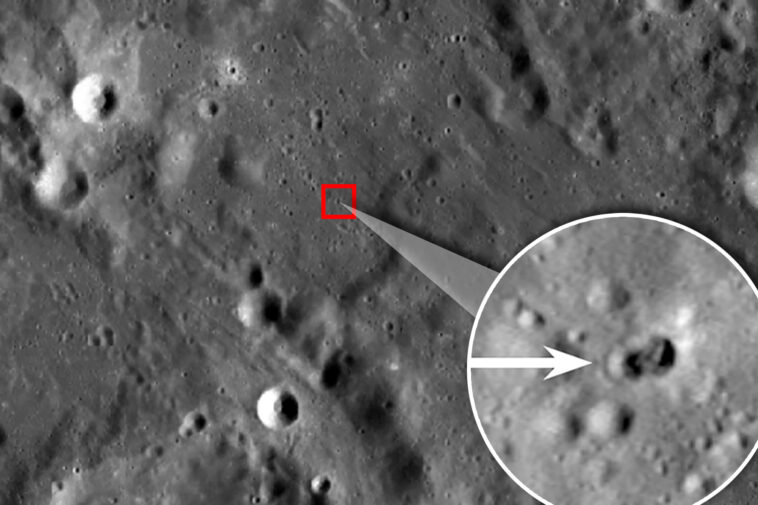According to NASA, a mysterious spacecraft collided with the moon and created a peculiar “double crater” on its surface. On March 4 of this year, a rocket of unknown origin crashed, and this week, the space agency revealed photographs of the event. NASA’s lunar survey orbiter discovered two craters after an object hit the moon that had been observed by the space agency late last year.
On the top of a western crater with a diameter of about 16 meters was an about 18-meter-wide crater on the east. According to NASA, this resulted in a twin crater that was about 28 meters broad in the longest dimension, which “may imply that the rocket body had considerable masses at either end.” The bulk of an expended rocket is often concentrated at the motor end; the remaining portion is mostly made up of an empty fuel tank.
The twofold nature of the crater may reveal its identity since the origin of the rocket body is still unknown. The four Apollo missions—13, 14, 15, and 17—all of which were much larger—were not mentioned, and it was claimed that no previous rocket body that had struck the moon had produced twin craters.
Independent astronomer Bill Gray saw the collision path in January and hypothesized that the object was probably the third stage of a Chinese rocket that had sent a test sample capsule to the moon and returned in 2014.
Chinese authorities, however, claimed that the top stage had returned to Earth’s atmosphere and burnt up. According to CNN, uncertainty about this moon collision has shown the necessity for government monitoring of space debris in deep space since there is no official tracking of space debris so far from Earth.
Source: Gloucestershirelive



